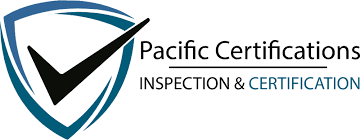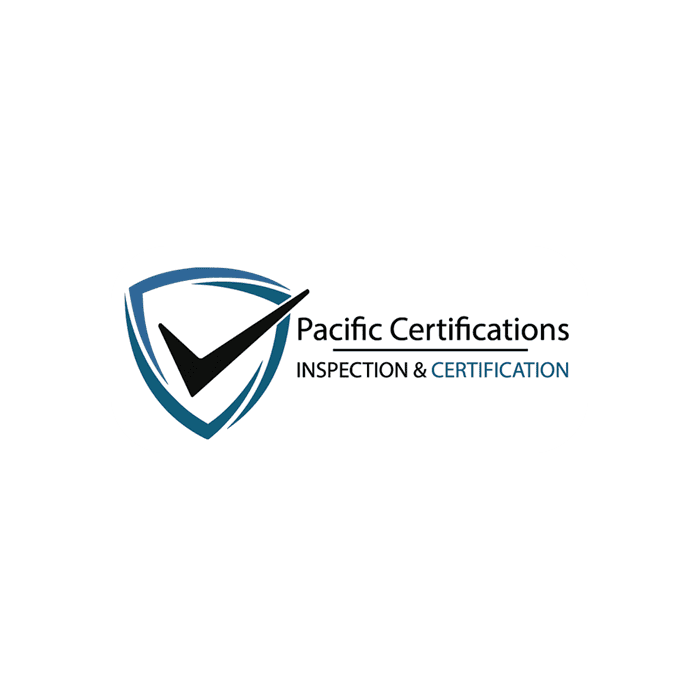ISO 9001:2015 -The Backbone of Quality Management Systems
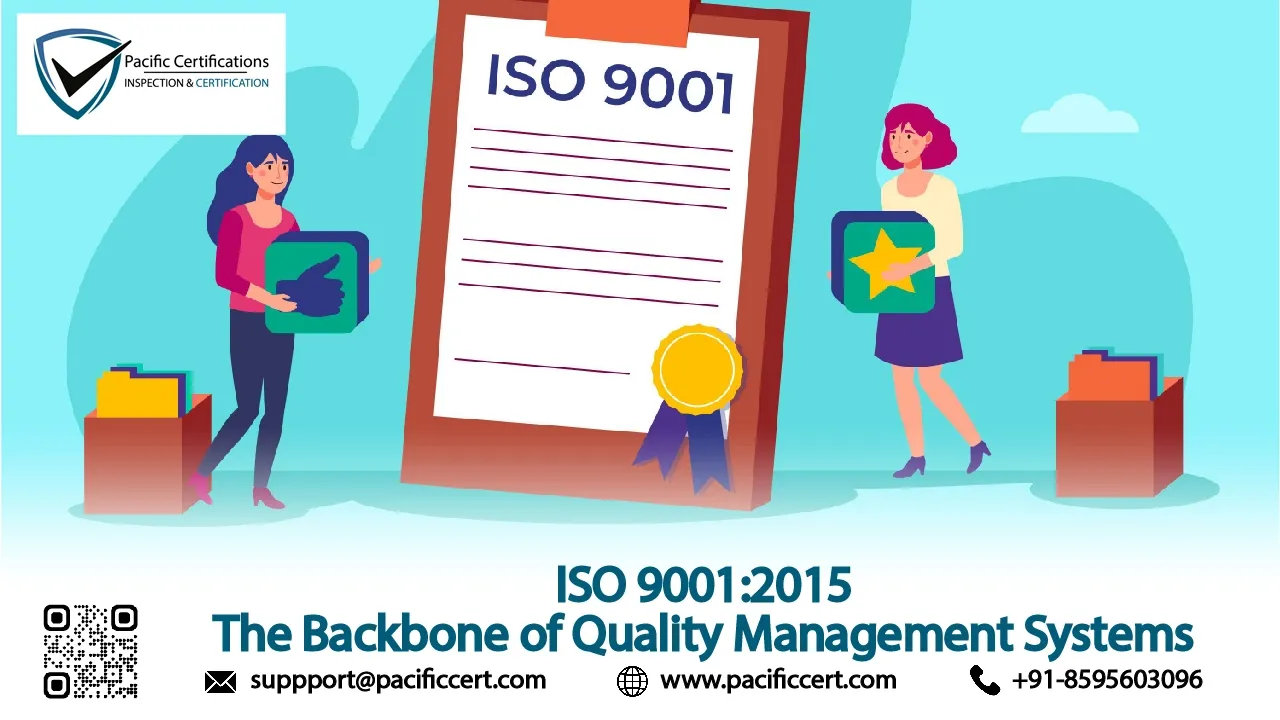
ISO 9001:2015 is still the world's most popular international standard for quality management systems (QMS). ISO 9001 offers organizations a framework that will allow them to provide products and services, on a consistent basis, that meet customer and regulatory requirements. ISO 9001 emphasizes customer satisfaction, planned process control, and continual improvement. As a result, it is relevant to every organization - regardless of industry sector (manufacturing, services, technology, etc.). Organizations that have implemented ISO 9001:2015 can expect improved management, practices and performance as well as improved credibility and acceptance in global markets.
Obtaining ISO 9001 certification indicates that the organization operates to internationally recognized quality management standards. Certifying the organization to ISO 9001 gives confidence to interested parties (stakeholders) that the organization meets and exceeds expected quality of products/services. Certifying the organization to ISO 9001 can improve the organization's chances at obtaining contracts and gaining access to new business opportunities. Integration of ISO 9001 principles can help the organization improve internal processes through greater control without errors. Ultimately, organizations that implement ISO 9001 principles can systematically promote a culture of continual improvement as aligned with business goals.
For more information, contact [email protected].
What is ISO 9001:2015?
ISO 9001:2015 continues to build on previous standards while having a clearer emphasis on adopting a risk(-based) approach and flexibility in conformity. It also allows organizations to clearly define processes, responsibilities, and objectives to help organizations understand at all levels what consistent outcomes need to be. It includes principles that allow organizations to meet customer needs, regulatory requirements and persistently improve efficiency and effectiveness.
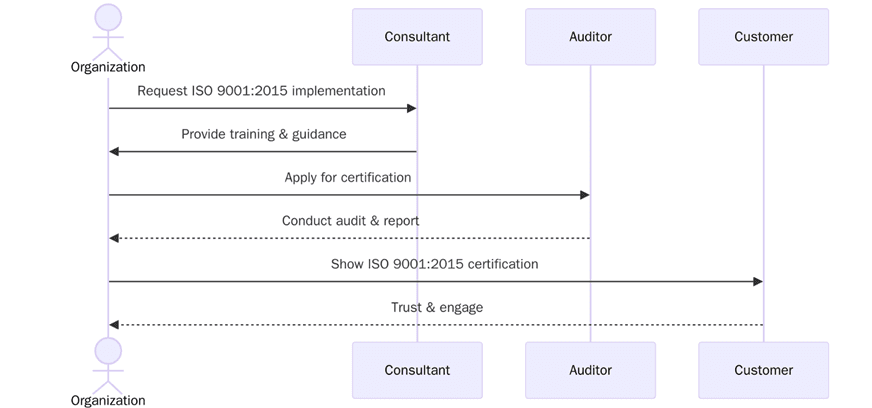
ISO 9001:2015 enables organizations to have standardized processes, take effective decisions, and have a formal process in place to standardize and manage quality at all levels inside an organization. Organizations have the flexibility to implement the standard in multiple ways and in multiple sectors from service sectors, healthcare, IT, manufacturing and education.
Why ISO 9001 certification matters?
ISO 9001 certification is a badge that is more than just a certificate; it shows to all stakeholders an organization's commitment to quality, reliability, and efficiency. Certified organizations experience better quality products and services, improved customer satisfaction, improved clarity throughout operations. ISO 9001:2015 helps to support an organization’s business goals, diminish waste and inefficiencies while enabling the effective management of risks.
Moreover, ISO 9001 certification often serves as a pre-condition to being part of a global market where other multi-national organizations commence their participation through public tenders and applications to be partners representing them at trade fairs or other vendor-based opportunities. Organizations accredited to ISO 9001 can often show credibility, governance and process discipline that make them a preferred partner for those suppliers and clients who accept the certification globally.
What are the requirements of ISO 9001:2015?
Before pursuing certification, organizations must understand the key requirements of ISO 9001:2015:

1. Determine internal and external factors, interested parties and the boundaries of the QMS.
2. Ensure top management supports and champions the QMS.
3. Determine risks and opportunities and establish quality objectives and plan for changes.
4. Provide resources, training and infrastructure for QMS implementation.
5. Control non-QMS processes, including product/service realisation, supplier management and customer-related processes.
6. Monitor, measure, analysis and evaluate the effectiveness of the QMS.
7. Act on nonconformities, corrective action and continuous improvement.
How to prepare for ISO 9001 certification?
Moving towards ISO 9001 certification requires planning, effective documentation, and commitment from all levels of the organization. To begin, examine existing processes, find existing gaps and think about how they align or do not align with ISO 9001:2015. A clear understanding of roles and responsibilities is important so that everyone knows their role in maintaining compliance and contributing to achieving quality objectives.
Document the processes, policies and records to ensure accurate representations of organizations’ activities. Conduct audits internally to identify nonconformities and trend them so that you are proactive to fix. Employee training is important for understanding QMS principles, audits and how to respond to auditor questions. Evidence of monitoring, action taken and improvements to processes shows commitment to audit readiness. You may consider undertaking a pre-audit to screen for weak points; little will improve confidence in an organization than organizers being confident going in to an audit.
For more information, contact [email protected].
Certification Audit
When an accredited certification body arrives to conduct the ISO 9001 certification audit, they are verifying that your QMS meets the requirements of ISO 9001:2015. The audit process usually consists of a review of documentation, followed by an evaluation on-site of processes, records and employee practice. The auditors determine the effectiveness of processes, gaps in performance and how the QMS supports objectives.
The audit will have appropriate findings, including several Non-Conformance Reports (NCRs) that will need remediation beyond the audit and these NCRs will have a defined period to address.
Once the audit is satisfactorily completed for the organization, it shows compliance with international quality standards, and the business is eligible for ISO 9001 certification. An effectively organised audit can improve the credibility of the business, improve customer confidence in the service/product provided and ensure compliance with regulatory and contractual obligations.
What are the benefits of ISO 9001:2015?
Below are some of the key benefits organizations achieve with ISO 9001:2015 certification:
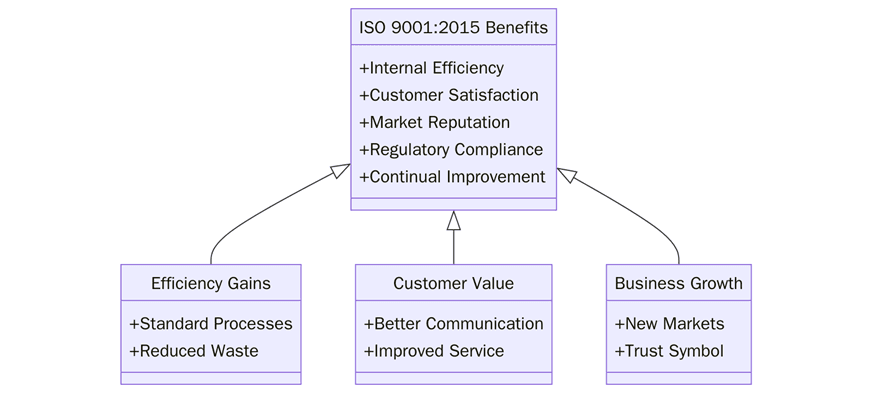
• ISO 9001 reduces variation in outcomes and subsequently reduces mistakes by formalizing processes and quality controls.
• Organizations can show reliability and measurable compliance with internationally recognized standards, to which repeat business can be earned.
• Documented processes eliminate unnecessary actions, build a streamlined workflow, and eliminate non-use of resources and time.
• ISO 9001 certification can allow access to new markets, public tenders, and partnerships which require proof of compliance.
• ISO 9001 provides a structured framework for an organization to identify, monitor, and manage risks in operations as well as compliance with regulation.
• Execution of a formalized processes nurtures staff engagement and ownership of their own accountability and performance, encouraging a culture of continuous improvement to build on past successes and mistakes.
• For an organization, improved control over processes and operational soundness leads to reduced mistakes which translates into reduced costs and better overall return on investment.
Contact Us
Pacific Certifications offers accredited ISO 9001 certification services and guides organizations through the entire audit process. Our team supports documentation preparation, internal readiness assessments, and external audit compliance to ensure a smooth certification experience.
Reach out to us at [email protected] or visit www.pacificcert.com to begin your ISO 9001 journey.
Ready to get ISO 9001:2015 certified?
Contact Pacific Certifications to begin your certification journey today!
Suggested Certifications –
Read more: Pacific Blogs
